Today we rented a car and took a tour of the island. Our car was brand spanking new we were the first ones to ever drive it. Eric did all the driving. It is the first time he has been behind the wheel of a car in two and a half months. A friend of ours put us in touch with a local on the island he knows. The local is named Peter and Peter and his wife (whose name we cannot pronounce, let alone spell) were kind enough to escort us on our tour of the island.
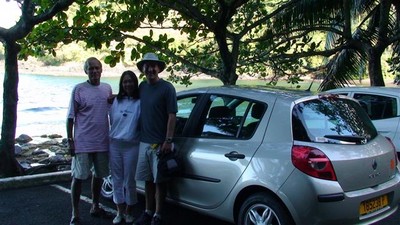
The sun was shining and it was pretty out, but it was kind of cold. Christi actually put on a jacket. The road around Tahiti parallels the ocean the entire way. Our first stop wasMaraa Grotto, a series of caverns with pools of water at the bottom. The caverns are right off the main highway, in a small, pretty park dripping with a variety of foliage. Check out the giant, funky looking bird of paradise.

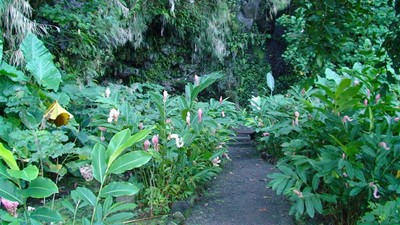
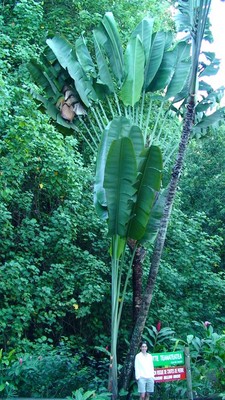
Our second stop was lunch at the Gauguin Museum and Botanical Gardens. We didn’t actually go into either the museum or gardens. Peter said the museum was lame. Lunch was nice. The restaurant has a metal roof and they tacked colorful cloth to the ceiling, giving it a festive feel. The support pillars were covered with palm fronds and flowers. The floor was dirt. The edge of the restaurant is right on the water, and sea spray would come up though the open windows. The food was excellent. Peter treated us to lunch, which was a pleasant surprise. Thank you, Peter!
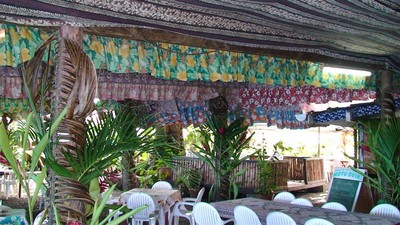
From there we went to Peter’s weekend beach house. Tahiti is shaped like an eight. The little part of the 8 is called Tahiti Iti (small Tahiti) and the big part of the 8 is called Tahiti Nui (big Tahiti). Their house is on Tahiti Iti, close to where it joins Tahiti Nui. Peter and his wife are both avid gardeners, and their home could be a botanical garden in and of itself. Check out the giant lemon and the orchids and ferns.
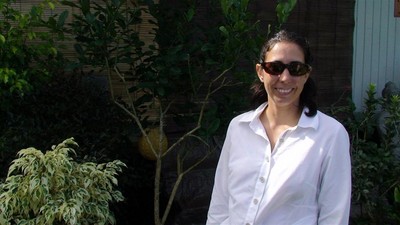
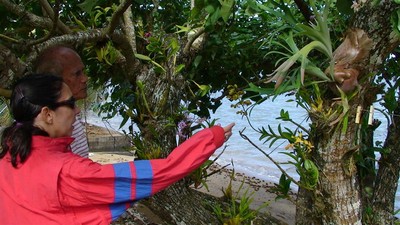
From Peter’s house we drove around Tahiti Iti a ways. The road doesn’t go all the way around Tahiti Iti, so we knew at some point we’d have to turn back. Tahiti Iti used to be home to the French Submarine fleet. The bay is 400 feet deep, easily accommodating submarines. There are enormous concrete and metal structures near the shore that you tie a boat to. Christi has never seen tie downs so big. Tahiti Iti is also home to one of the most famous surf spots in the world, Teahupo, called the “jaws of water” for it’s enormous waves. 18 foot waves are common there. The surf championships had just taken place here a few weeks ago.
Our next stop was the Arahoho Blowhole. We stopped in a little parking lot along the water off the side the road. We looked over at the rocky shoreline and waited for something to happen. Nothing. Peter explained to us that since the seas were calm today, the blowhole wasn’t spurting. But, had the water been spurting, we were looking in the wrong spot anyway. The water travels under the road and spurts out on the other side of the highway, drenching cars as they go by. That would have been a good thing for the guidebooks to mention. We cannot imagine driving on this scary narrow ledge overhanging the ocean and suddenly being shocked by a huge spray of water from nowhere.
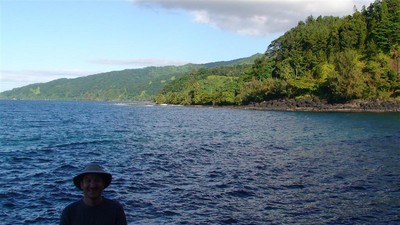
We tried to stop at a waterfall, but the road to it was under construction and closed.
Our last stop was Point Venus, where there is the only lighthouse on the island. Peter told us that was where the missionaries first started converting people. Lonely Plant said that Captain Cook built an observatory there. It is a nice public park, crowded with locals swimming and rowing outrigger canoes.
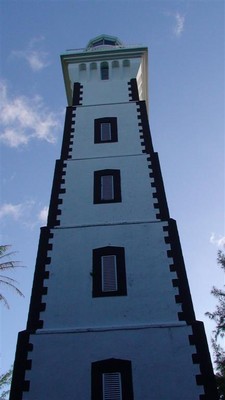
The shoreline is built up all around the island. The farther away you get from Papeete, the less development up the mountain. Every few miles there would be a commercial center with a post office, church or two, gas station and grocery store, but beyond that it was mostly houses along the road. They are in the process of building another port area on the other side of the island to try to create jobs outside of Papeete.
There were a few beach areas, but once again, Tahiti does not live up to the stereotype of amazing endless beaches. In most spots the surfers have to paddle out to the edge of the reef and surf out beyond the reef. It seems dangerous to us to be surfing into coral rather than sand at the end of the wave. It was certainly green and lush with foliage everywhere on the island.
Peter was a wealth of information. He brought us up to speed on the political situation. We were a bit confused by the fact that French Polynesia has a president, but they are under the French president. He clarified. Peter explained why the French people view French Polynesia as a drain on their tax dollars. Basically, infrastructure is expensive in general, and it is even more expensive to bring infrastructure to such tiny, remote places. There are 250,000 people spread over 120 islands, and 160,000 of those people are on Tahiti. Most of the islands have less than 1,000 people on them. To create a first world infrastructure for the islanders has cost a ridiculous amount of money per person, like tens of millions per person on some islands. He also gave us an idea of what it costs to live in Tahiti. Once again, we knew it was expensive, but nearly fell over at the actual numbers. To qualify for low income housing you must make less than $4,600 American per month. We also found out the grocery store in the mall is the nicest one in all of the South Pacific, so we won’t see another like it again for a long time.

Eric – I do not think that huge palm is a Bird of Paradise. We actually saw them in Maui. It is some sort of a fan palm. – Mike
so Tahiti doesn’t have endless beaches? i have always wanted tovacation there and stay in one of those huts over the water.
wow, 4,600 dollars (american). i guess i am rich compared to those figures.